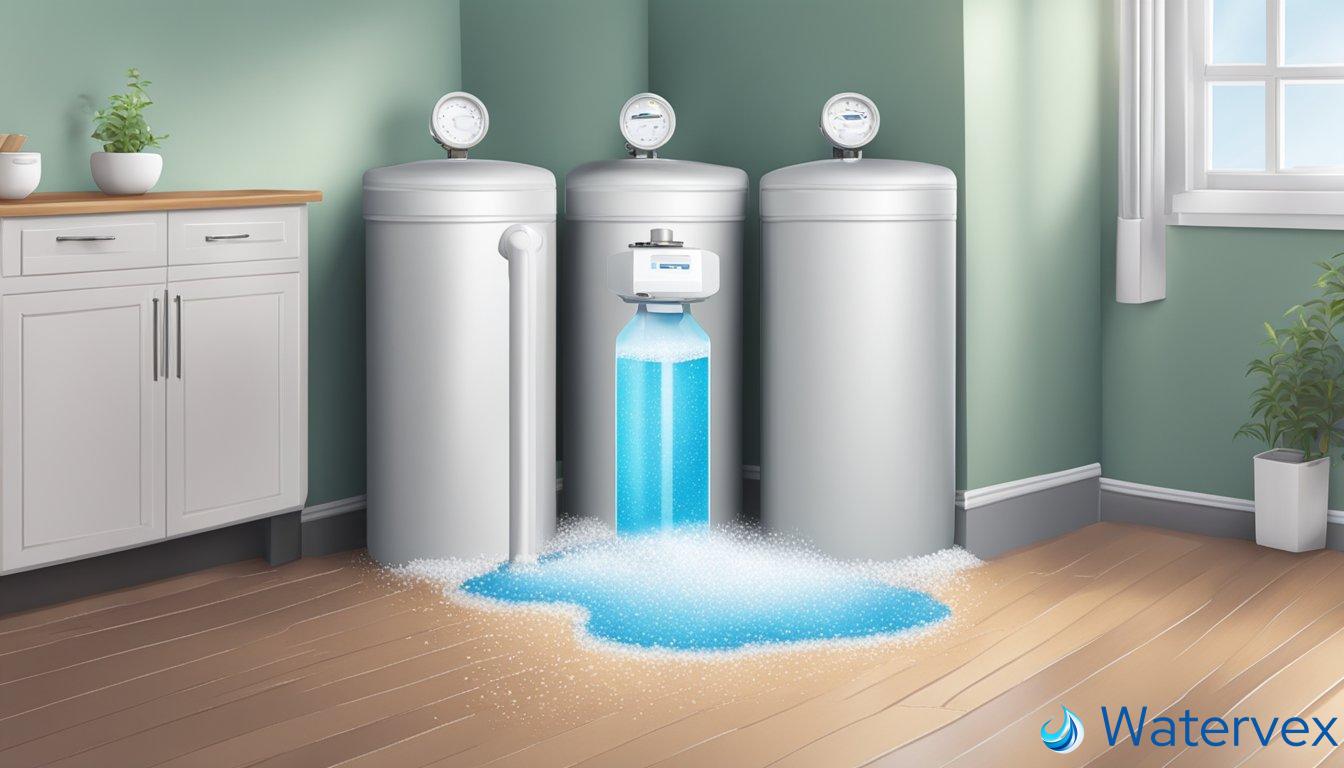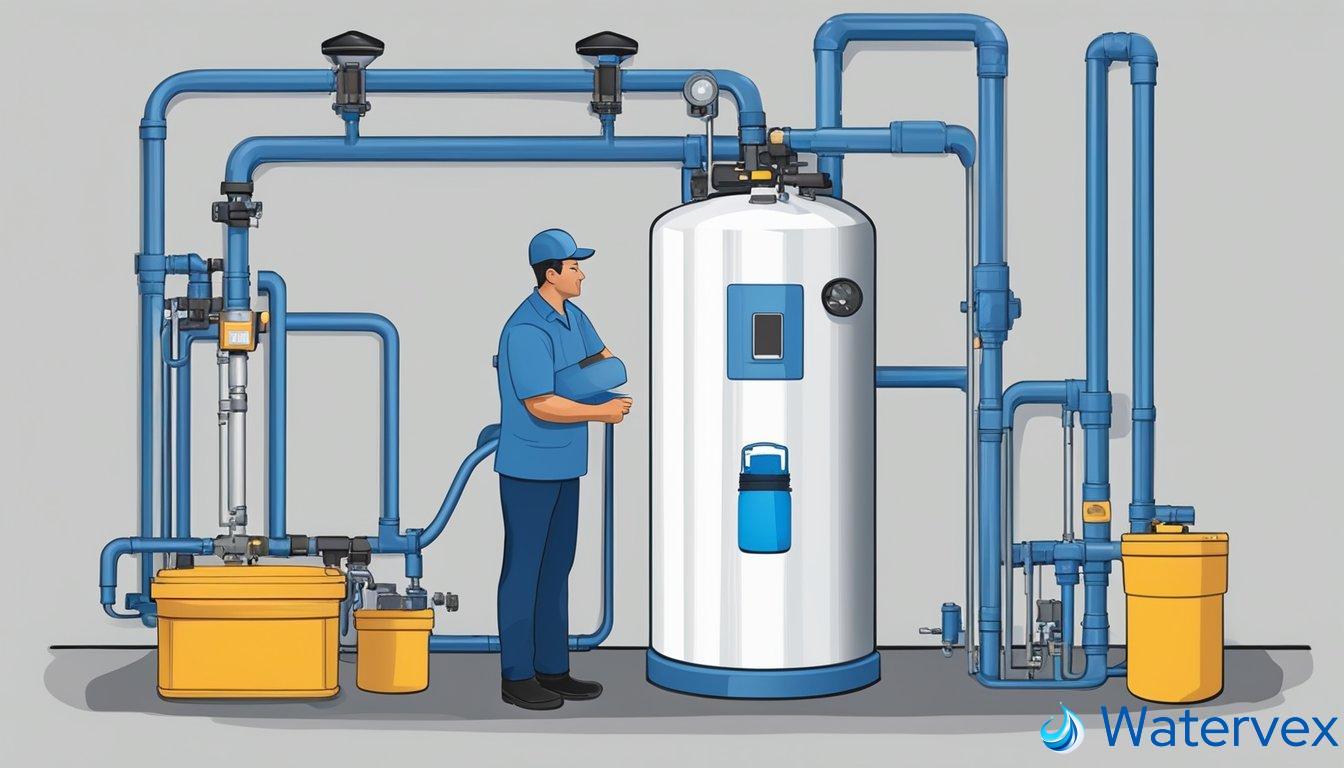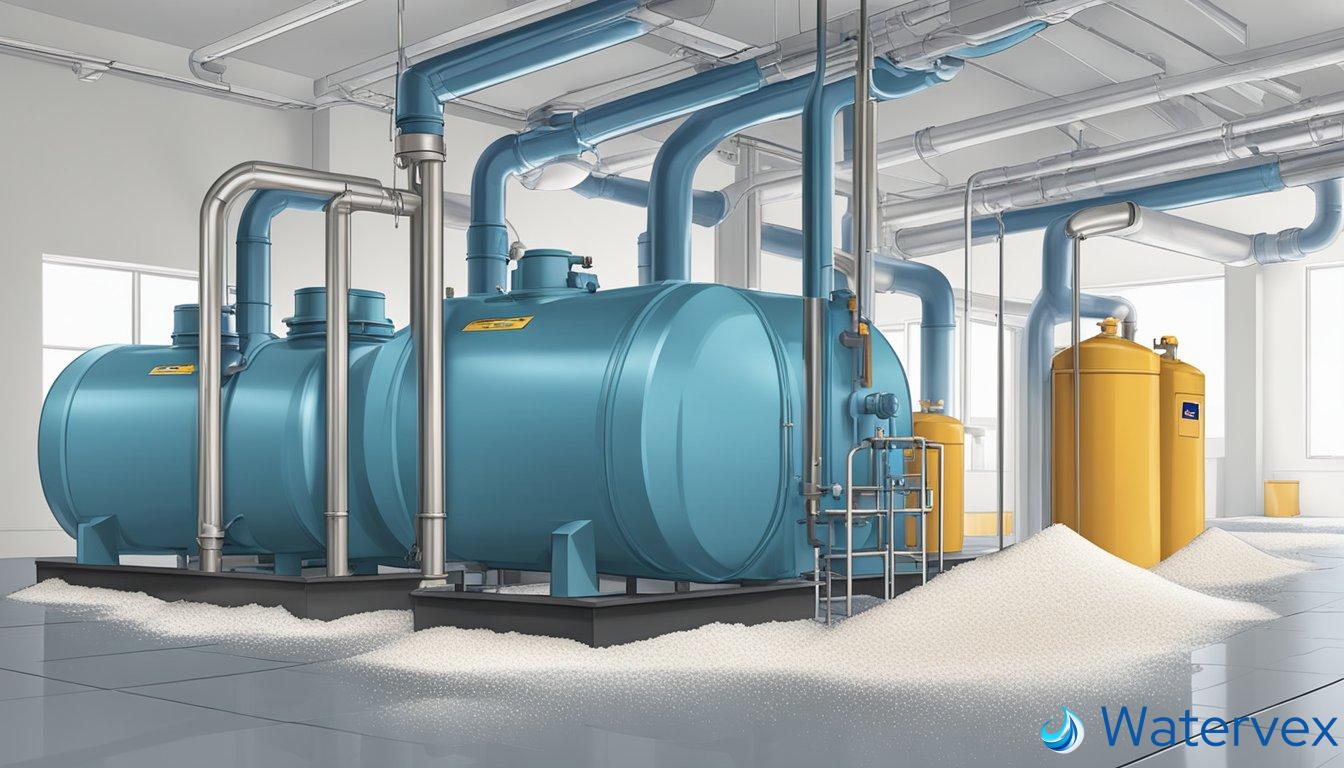Maintaining the correct salt level in your water softener is crucial for its efficiency and the quality of your water. The question of whether you can overfill a water softener with salt is one that many homeowners face. In essence, you can indeed put too much salt in your softener’s brine tank, which can lead to a variety of issues, such as salt bridges and blockages that affect the unit’s ability to soften water properly.

When managing a water softener, it’s important to understand that while the unit needs salt to function, more is not always better. Overfilling the brine tank can hinder the softener’s regeneration cycle, the process that flushes out hard water minerals from the resin beads. Ensuring you maintain the right salt level not only prolongs the life of your water softener but also assures that you’re getting the best water quality for your household.
Key Takeaways
- Proper salt levels are vital for water softener efficiency.
- Overfilling can cause issues such as salt bridges.
- Correct maintenance ensures water quality and softener longevity.
Understanding Your Water Softener System
Managing a home water softener system requires awareness of how each component functions, particularly when it comes to salt usage for regeneration.
Components and Functionality
Your water softener system mainly consists of two parts: the resin tank and the brine tank. Inside the resin tank, resin beads work through a process called ion exchange, swapping hardness ions like calcium and magnesium with sodium ions. This ion exchange is what softens your water. The brine tank is where water is mixed with salt to create a brine solution, critical for regeneration, the process resetting the resin’s capacity to exchange ions.
The Role of Salt in Regeneration
Salt is the agent that allows regeneration to happen. During this process, the brine solution from the brine tank travels to the resin tank to refresh the resin beads, ensuring they can continue to effectively remove hardness from your water supply. An efficient water softener will measure your water usage and prompt the control valve to initiate regeneration, using just the right amount of salt to keep the resin bed functional. Too much salt can lead to issues like salt bridging, impeding the efficiency of your system.
Proper Salt Levels and Maintenance

Maintaining the correct salt level in your water softener is crucial for optimal performance and efficiency. Regular monitoring and proper salt replenishments can prevent issues such as salt bridges and ensure the regeneration process runs smoothly.
Routine Checks and Salt Replenishment
Salt levels should be checked monthly; your softener’s manual will indicate the ideal salt level for your specific model, but a good rule of thumb is to keep the salt at least a few inches above the water line. Add salt to the brine tank when levels are low, but be careful to avoid overfilling, as excess salt can lead to problems. Use a quality salt type recommended by your manufacturer, such as solar salt, evaporated salt, or salt pellets.
- To replenish: Gently pour the recommended salt into the brine tank, taking care to not disturb the components inside.
- Frequency: The regeneration cycle dictates how often salt is needed; high water usage demands more frequent additions.
Avoiding Common Salt Issues
Maintain an environment with low humidity around your water softener to keep your salt from absorbing moisture and forming a solid crust, known as a salt bridge, which can hinder the regeneration process. If a bridge forms, carefully break it up without damaging the tank. In regions with high iron content, rock salt can lead to mineral buildup in the valves, so choose evaporated salt or salt pellets, which are more diluted and clean.
- Types of salt: Opt for sodium chloride or potassium chloride based on your dietary needs and local regulations.
- Maintenance: Regularly inspect valves and other softener parts during routine checks to ensure proper filtration and flow.
The Impact of Overfilling the Brine Tank

Adding too much salt to your water softener’s brine tank can lead to issues that affect both the efficiency and longevity of your system.
Recognizing the Signs of Overfilling
When your brine tank has too much salt, you might notice salt crystals forming on the edges, a phenomenon known as a salt bridge. This hardened crust can create a space between the water and the salt, preventing the salt from dissolving properly and impacting the regeneration process. Additionally, look for signs of salt mushing, a thick sludge at the bottom of the tank caused by excess salt dissolving and recrystallizing, which can lead to standing water in the tank.
Consequences and Troubleshooting
An overfilled brine tank can cause various issues:
- Salt Bridges: Can be deceptive; tapping the crust can help break it up, but be gentle to avoid damaging the tank.
- Salt Mushing: This blockage may need scooping out, followed by a tank cleanout to remove residual sodium deposits.
- Performance Drop: High water hardness levels may persist if the water softener cannot properly regenerate, signaling an overfilled tank or blockage. A salt-based water softener should maintain soft water output when filled correctly.
If you encounter standing water indicative of improper drainage or blockages, consult the manual or a specialist. Regular maintenance and avoiding overfilling can keep your water softener operating smoothly, safeguarding your household water quality.
Ensuring Water Softener Efficiency and Safety

When managing your water softener, avoid overfilling the brine tank with salt. Doing so can lead to various issues affecting both efficiency and safety. Let’s break down why moderation is key and how you can maintain the right balance.
Hard water stains often signal an ineffective softener. Overfilling the salt tank can restrict water flow, preventing proper regeneration. This lack of regeneration means minerals like calcium, magnesium, and iron might not be adequately removed, leading to build-up on glassware and kitchenware, or worse, in your pipes.
Here’s what to keep in mind:
- Salt Level: Maintain salt levels a few inches above the water line but well below the top of the tank. Overfilling can cause salt bridging, meaning solid crusts that disrupt the creation of brine.
- Water Pressure: High levels of minerals in improperly softened water can decrease water pressure, impacting everything from your shower to your dishwasher.
Here’s a quick reference table for proper maintenance:
| Action Item | Benefit |
|---|---|
| Regular Salt Checks | Prevents bridging and maintains efficiency |
| Monitor Softener Settings | Optimizes mineral removal and water flow |
| Salt Quality | Use pure salt options to reduce maintenance |
For homes on a low-sodium diet, manage salt input closely as it impacts the sodium content of your water. In some cases, reverse osmosis systems can be paired with softeners for purer water with less sodium.
Remember, more salt does not equal more softening power. By keeping the salt at the ideal level, you’re ensuring your water softener works without a hitch, giving you peace of mind and protecting your investment.

